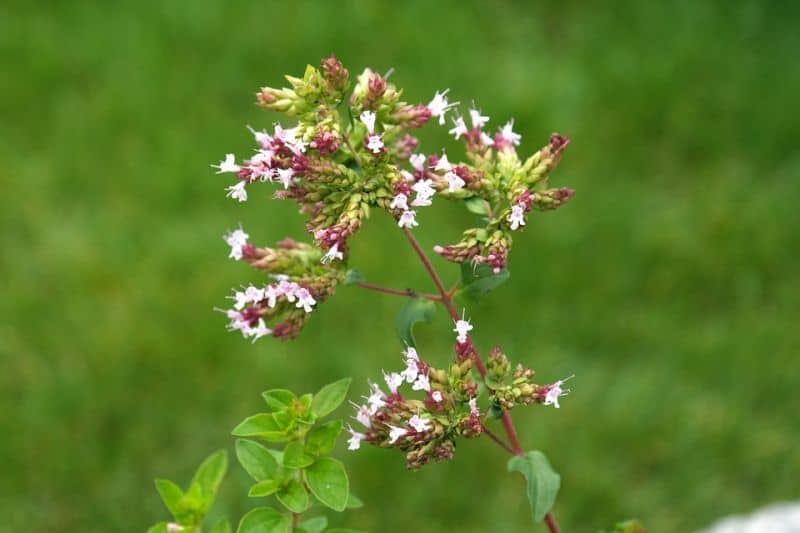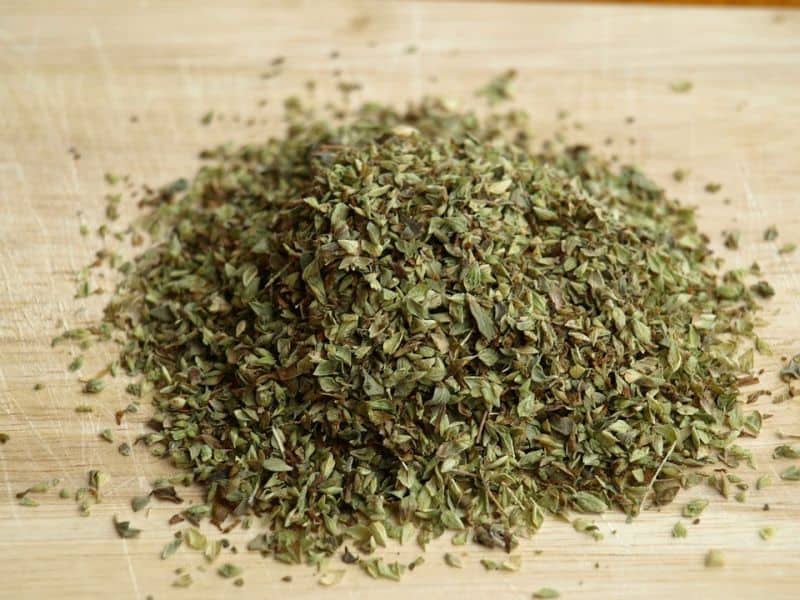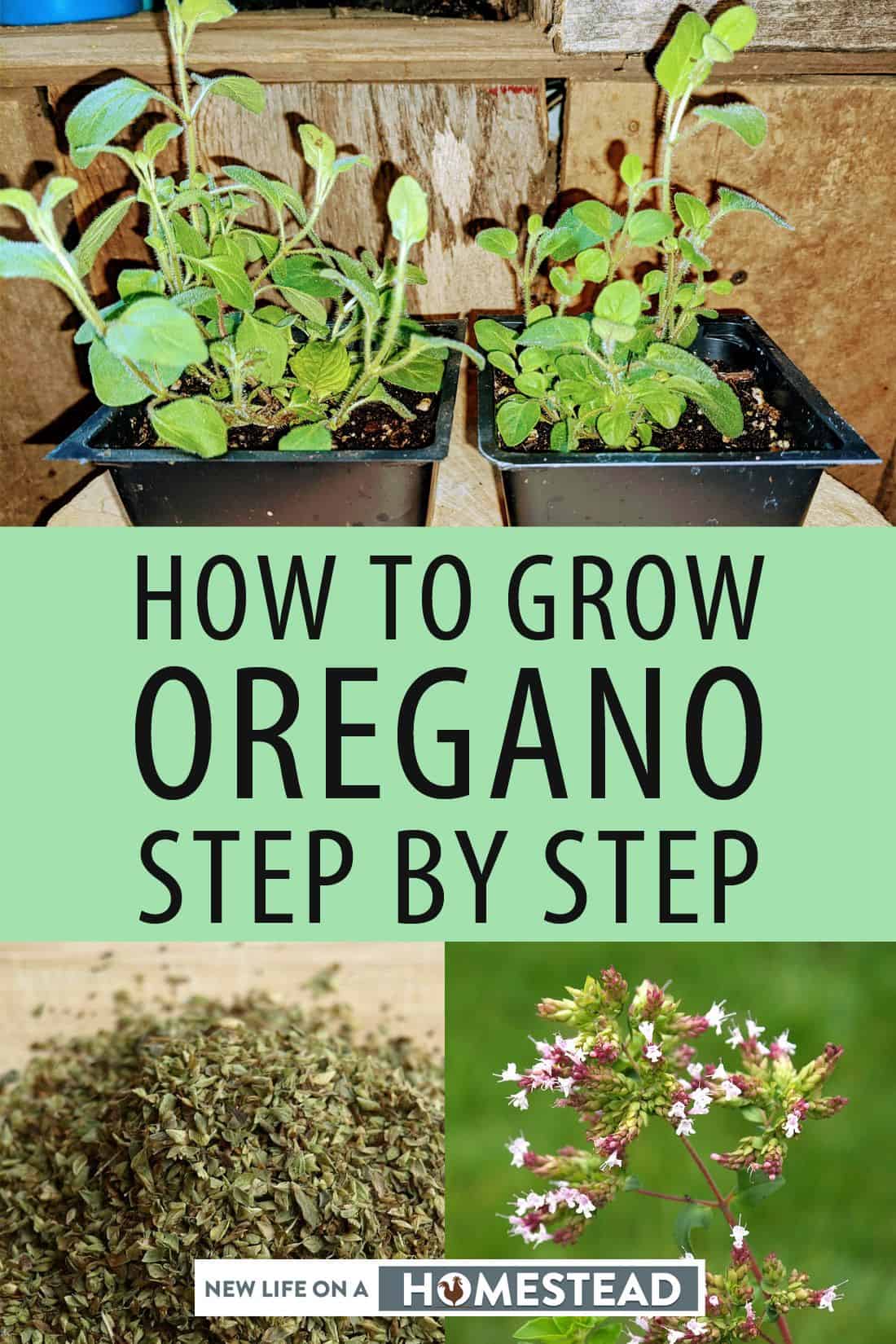Oregano is a superb multi-purpose culinary and medicinal herb. The delicious herb is not only often used in my homesteading kitchen, but also in herb balls that I made for all of our livestock to boost their immune systems and help keep them healthy.
This herb plant is a part of the Origanum genus. Origanum vulgare, the scientific name for oregano, is typically grown for its leaves that are dried and powdered, and used as a spice on pizza, spaghetti, lasagna, and a host of other homestyle favorite dishes.

Oregano Healing Attributes
This herb plant is known for its natural antibacterial properties. It contains powerful antioxidants such a carvacrol and thymol, which may help fight serious infections, such as staph. Oregano also contains significant compounds of vitamin K, fiber, vitamin E, iron, manganese, calcium, and tryptophan.
Just two tablespoons of oregano equals about six percent of the body’s needed daily intake of fiber – without adding a single calorie to your diet.
This herb plant is also often heralded for its antimicrobial, anti-inflammatory, and antiviral, and anti-fungal properties as well. This herb and the oil made from it are generally considered safe to use both topically and orally.
But, even though oregano is a mild and natural substance, that does not mean it is safe for everyone to use or that an allergic reaction cannot occur. It is always recommended that you check with your doctor before embarking on any type of a natural remedy routine.
Oregano leaves that are fresh, have been powdered into a spice, or processed into an extracted oil, have all been used in natural healing recipes. The Origanum vulgare variety of oregano may be the most potent, from a health benefits standpoint.
Although dried oregano (spice form) is safe to eat when properly dehydrated and stored for an extremely long time, it may lose its natural healing potency after roughly six months.
Oregano oil has a far longer natural healing shelf life. The extracted oil has often been an active ingredient in natural remedies created to treat or prevent nausea, sore throat, joint pain, indigestion, cold sores, nasal congestion, as well as joint and muscle pain.
Oregano Plant Facts
- Leaves on the oregano plant are largely oval in shape, and are positioned in an alternating pattern on the stem.
- When in bloom, oregano produces tiny purple, white, or pink flowers and small and oval fruits in a brown shade.
- Oregano plants typically grow up to roughly three feet tall.
- This herb is a perennial plant that can usually be grown for three to four consecutive years if it is not being cultivated in a northern region. In such a climate, oregano is most often successfully grown as an annual, or cultivated entirely indoors to attempt to convince the herb that it is a true perennial. One of my homesteading friends has been able to keep an oregano plant producing for nearly a decade.
- Oregano is often also dubbed either wild marjoram or European oregano.
- This herb plant hails from the Mediterranean.
- The Greeks referred to the oregano plant as “joy of the mountain.”
- There are two different categories that are most commonly sold and grown on the residential level – Mediterranean oregano and Mexican oregano. The latter is actually a “relative” of lemon verbena. While the growing tactics are the same for either type of oregano, the varieties boast a decidedly different taste.
- While the taste of the oregano leaves does not dissipate over time, their potency for herbal remedy purposes is often reduced once they are three years old.

Oregano Growing Tips
- Oregano grows equally well in containers indoors or out, as well as it does when planted in the ground. Even if you are homesteading in only a small backyard or even an urban home, cultivating oregano can be done successfully.
- If cultivating oregano from seed, do not plant outdoors until approximately six weeks before the final anticipated frost.
- When growing oregano from a cutting, the ground temperature should be a minimum of 70 degrees F / 21C before putting it in the soil.
- For best results, plant oregano in a well draining and light soil.
- This is a “plant it and forget it” style of plant. Oregano typically requires no fertilization or composting around it in order to thrive.
- The one sure killer of an oregano plant is over watering. If you tend to have a wet spring like we do here on my survival homestead, planting oregano in the ground is quite unwise. There have been many times when I must bring in my containers of oregano because it is getting water logged soil, and showing signs of dampening off. Oregano plant soil should just be damp to the touch and always placed in a container with adequate drainage holes.
- Oregano is an excellent companion plant of nearly any commonly planted garden crop or other herb plant. I would not recommend planting oregano alongside lavender if you live in USDA growing zone 6 or higher because the bushy nature of the plant can cause too much humidity to develop, which can wilt lavender quickly.
- Oregano is hardy in USDA growing zones 5 through 10.
- This herb plant attracts aphids, but it also entices flower flies (syrphidae) that eat many smaller and destructive garden pests.
- Grow this herbal all star of a plant in soil with a pH level between the mildly acidic 6.0 to even more staunchly alkaline 9.0 pH level. In my personal experience, the best pH balance for oregano is between 6.0 to 8.0.
- It usually takes between seven to 14 days for oregano seeds to germinate.
How To Grow Oregano From Seed
- Place oregano plants about one foot apart when cultivating them in a ground plot or raised bed. Oregano is a bushy plant that can span up to 18 inches across. When growing in a container, use one that is a minimum of 12 inches in diameter.
- Plant oregano in a full sun environment. While it can tolerate partial shade, the lack of sun can allow the soil to remain too damp after a rain.
- To plant oregano seeds, simply broadcast them upon the soil.
- Mist them with water lightly, then cover with clear plastic wrap or a clear plastic container lid – and place them in a warm and sunny spot.
- After the oregano seedlings hit the six in tall mark, thin them out and plant at the recommended distance apart in a sunny spot.
How To Grow Oregano From Cuttings
- To get an oregano cutting to root and grow into a plant, use pruning shear or very sharp scissors to diagonally cut a stem piece that is three to five inches long. Make certain to cut about the node – spot where new leaf growth will emerge.
- Both the leaves and the buds on the lower two thirds of the oregano plant stem should be pinched with one hand, while the cutting occurs so they too do not accidentally get chopped.
- Make certain to leave two leaves on the top of the oregano plant stem to foster new growth, and to help prevent harming the parent plant’s health.
- Root the oregano cutting in a cup that has a little bit of lukewarm water in the bottom – just enough to cover the bottom third of the cutting.
- When the water in the cup starts to look murky or cloudy, discard it and pour in fresh, lukewarm water.
- Put the cups with the cuttings in a sunny and warm spot – under a plant grow light is highly recommended. Some folks prefer to use indirect light to root oregano cuttings, but I have personally had the best luck with direct sunlight in a windowsill, or a plant light positioned one foot above the top of the cuttings.
- Once the cuttings have taken root, plant them in a moist potting soil in a container with adequate drainage holes.
- Dipping the roots of the oregano cuttings in a rooting hormone is optional, but may increase the chances of the cuttings developing into a robust plant.
- While it is feasible to place multiple oregano cuttings in the same large gardening container, it is essential that the leaves do not touch because rot may occur if they do – especially right after watering. I highly recommend putting each oregano cutting into a small container of its very own.
- Once the cuttings have established solid roots and true plant, the oregano can be transplanted to its permanent growing spot or container.
Oregano Pests
- Aphids
- Thrips
- Leafminers
- Cutworms
- Spider Mites
Oregano Plant Diseases
The only disease which really impacts this hardy herb plant is mint rust – puccinia menthae. If you notice spots of bright yellow, orange, or brown pustules on the underbelly of leaves or on new plant shoots, mint rust is likely the culprit.
Mint rust has a dusty look and feel to it. This plant disease kills large portions of leaf tissue, causing them to fall off the plant in many cases. Mint rust is a fungus that can easily spread from any mint plants that are infested and are located adjacent to oregano plants.
There is really no good way to get rid of mint rust while also salvaging the oregano plant. Removing both the plant and the roots and disinfecting gardening tools used in the process, is highly recommended.
Treating roots of the plant with a 10 minute soak if first hot water (about 110 degrees F / 43 C) followed by a soak in cool water, and then replanting can supposedly work – but I feel it is best to remove a plant with mint rust to prevent its spread.
Oregano Harvesting Tips
- Leaves from the plant can be harvested as soon as the stem reaches a minimum of four inches tall. Unless I am in great need of some oregano, I typically wait until the plant is double that size before harvesting.
- Simply cut the leaves you need gently from the plant. For best oregano herb longevity results, do not cut any leaves below the bottom two thirds of the plant.
Regular trimming of oregano plants not only helps prevent them from becoming “leggy”, but also often bolsters new growth. The taste and potency of the oregano leaves truly seems best (in my personal opinion) if you harvest the leaves before the herb plant flowers.

How To Preserve Oregano
You can tie stems with leaves together, and hang them upside down in a well-ventilated area. But, most folks do not want to go this route because you are sacrificing far too much of the plant just to get the most commonly used part – the leaves.
The best way to preserve the oregano plant is to snip the leaves, and place them in a dehydrator at the lowest heat setting for approximately three hours.
Once the leaves are dried, you can store them in an airtight container like a Mason jar or a vacuum sealed bag, or powder them in a food processor and then store them the same way to conserve space.
Growing oregano in the garden or in containers inside the home will help keep your family well stocked with both a delicious and nutritious cooking herb, as well as a prime natural ingredient for tea, poultices, and oil creations that can be used on both the livestock and humans on your homestead.

No comments:
Post a Comment